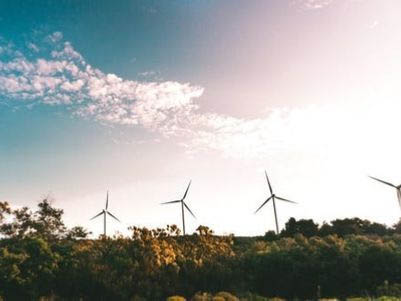According to foreign media reports, French energy storage manufacturer and system integrator Saft has stated that it will provide a lithium-ion battery energy storage system (BESS) for a gold mine in Australia, enabling it to use renewable energy to meet more than 50% of its electricity Energy demand.
“EDL, the energy developer who deployed the project, has deployed one of Australia’s largest microgrids at the Agnew Gold Mine in Western Australia. This microgrid is based on a mixed deployment of renewable energy (wind and solar) and is equipped with natural gas power generation facilities and diesel power generation the machine is used as a backup power source. The total installed capacity of the microgrid is 56MW, including a battery energy storage system with an installed capacity of 13MW. Global miner Gold Fields owns and operates this mine.”
The battery energy storage system and solar farm deployed by EDL at Agnew Gold Mine
EDL has signed a 10-year contract with Gold Fields to provide micro-grid solutions for Gold Fields’ 600 square kilometers mine. James Harman, CEO of EDL, said that although this micro-grid solution allows the mine to use an average of 50% renewable energy, it can sometimes meet up to 85% of its electricity demand through wind and solar power generation. The project was completed in May this year, and its total cost is about 110 million Australian dollars (80 million US dollars), of which about 10% of the funds come from the Australian Renewable Energy Agency (ARENA) funding.
This 13MW/4MWh battery energy storage system microgrid project uses 6 containerized Saft Intensium Max battery energy storage units, enabling EDL’s microgrid to integrate variable renewable energy, including solar power facilities with an installed capacity of 4MW and The installed capacity is 18MW wind power generation facilities, in addition to a 21MW diesel generator. This microgrid is also considered Australia’s first mine microgrid that integrates wind power generation facilities.
The Intensium Max lithium-ion battery energy storage system is installed in 20-foot-long containers, which are placed side by side. The battery energy storage system also deploys its power conversion system (PCS), transformers and medium voltage switchgear. This battery energy storage system will not only provide power from multiple sources of renewable energy for the mine, but also deploy backup diesel generators to maintain the stability of the microgrid power supply, thereby minimizing fossil fuel power generation. Facilities operation requirements.
Saft said in a press release that the battery energy storage system has been installed and tested at the company’s production center in Jacksonville, Florida, and is designed to withstand harsh desert conditions on site, including simulations of up to 48 degrees Celsius ( 118.4 degrees Fahrenheit) for long-term operation.
This is seen as a rare opportunity for the hybrid deployment of solar power, wind power and battery energy storage systems to deploy microgrids, because the energy requirements of mines are quite intensive and they are far away from a reliable power grid. This means that like islands, costly fossil fuels also need to be transported over long distances.
In addition, the mine developer Rio Tinto said in February this year that it would tender for the procurement of 34MW solar power generation facilities and 12MWh battery energy storage system for a mining farm in Western Australia. A gold mine in Mali, Africa, has also deployed a 30MW solar power plant and a 17MW/15MWh battery energy storage system.


Leave A Comment